It’s a great time to be a WordPress developer or agency. There are economic, technological, and social factors all converging to make this a truly unique time for those of us in this space.
It’s also very competitive and challenging. Growth is not easy. It requires skilful management of resources, enormous self-confidence and boatloads of energy. It also requires some personal development, especially when it comes to getting out of your comfort zone.
I talk to hundreds of WordPress consultants from all over the world on a regular basis and one of the conversations I find myself having over and over again is about dealing with larger organizations.
It can be uncomfortable. Tackling a larger client can feel intimidating and overwhelming. So much so that it’s easier to put them in the “too hard” basket. This is what most do, and this is why there are huge opportunities for those of us who are willing to step out of our comfort zone and dip our toe in the water.
The purpose of this article is to give you some structure and help you feel supported as you navigate the uncharted waters you will find yourself in when talking to larger businesses. Hopefully by the end of this article you will be inspired and have some actionable takeaways you can implement.
Why bother?
I could give you many reasons why dealing with larger clients is a good idea but I’ll sum it up like this: they are usually more profitable and less emotional.
One of the challenges with small businesses is that most of the time, you are asking a business owner to take money out of their savings account and give it to you in exchange for something they don’t really understand. It requires an enormous amount of work on your behalf to build that trust, and the client is on tenterhooks most of the time because they have so much skin in the game.
Larger clients are usually spending a budget that has been allocated well in advance, and have more realistic expectations regarding outcomes. Most of the time you will also be working with a project manager who has more experience than the average small business owner.
Larger organizations like dealing with small teams or solo developers because they generally work faster and are more agile. Working with larger clients also allows you to focus on fewer projects at the same time and really flex your creative and technical muscle to deliver great solutions. In my experience, the referrals are usually better quality and more frequent too.
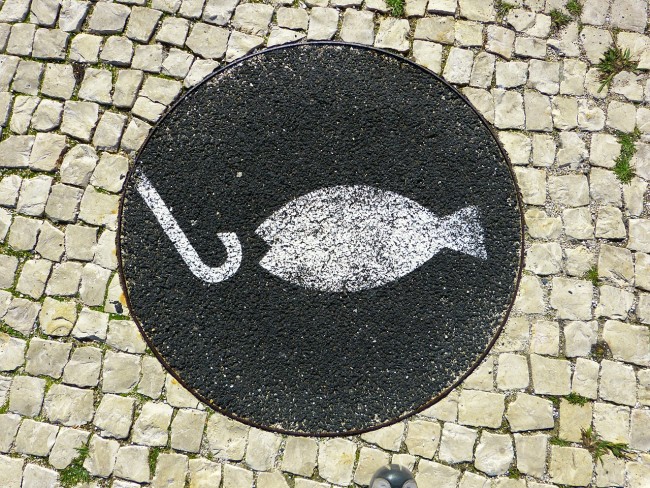
So how do you pitch and win larger clients? Let me share what has worked for me over the years. Some of this might seem obvious but all of these elements work together like an orchestra: if one part falls over it affects the entire symphony.
As you read this article, just remember that larger businesses are full of people, human beings just like you and me. Just because they have bigger budgets, larger followings and perhaps more interesting projects doesn’t change the fact that they are all driven by the same desires and fears as all of us.
Let’s get to work.
First impressions matter — make the most of them
Hopefully you already have a professional looking, up-to-date portfolio of work. If not, then get to work on building it right now.
Make sure your portfolio includes multiple screenshots, links to the live site, an overview of the original brief and even a case study on the impact the finished product has had on the client’s business. The gang at Human Made do a great job of presenting case studies on their portfolio site.
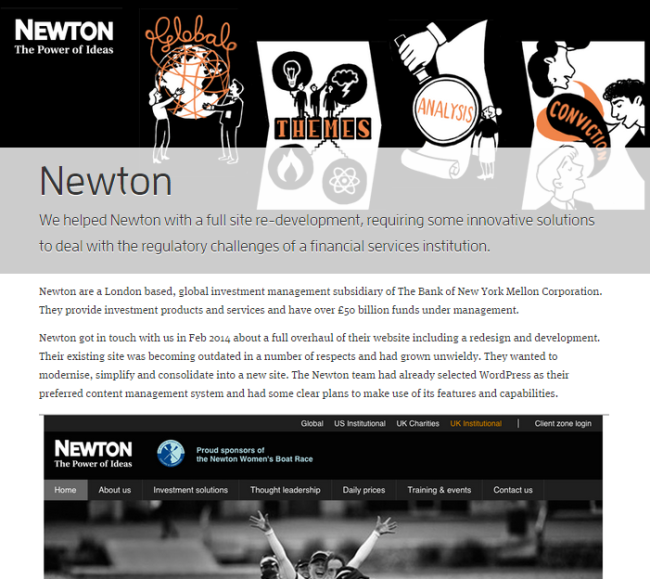
Make it super easy for people to get in touch with you. Include maps, telephone numbers (yes I know it’s scary but larger clients actually want to speak with you) and of course a contact form. Melbourne WordPress Agency “24” do a great job of this on their contact page.
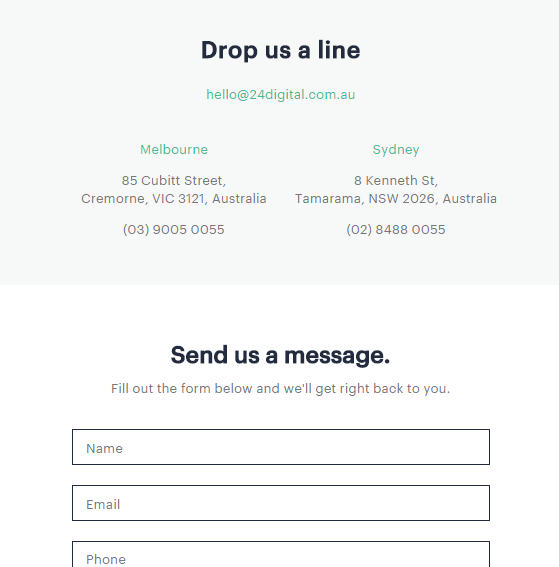
This goes without saying but is super important. Your website must look amazing. Not good, not good enough, not almost finished but freaking amazing. Bring as much of your own personality to your site as you can.
One of my web design heroes is a guy named Andy Clark from the UK. His agency is called Stuff & Nonsense and he is a huge fan of Planet of the Apes. People hire Andy because he’s darn good and his website reflects that.
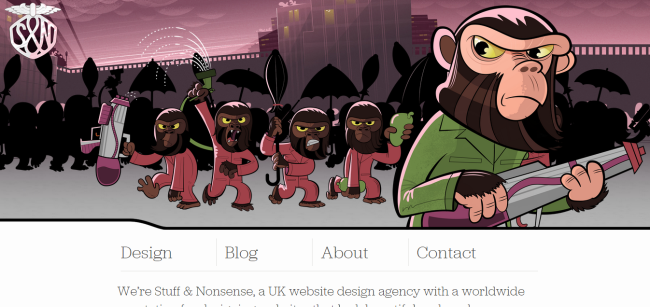
You may think testimonials are a bit cheesy but I promise you social proof is critical when it comes to building trust with strangers. My friend Derek Sivers gave this great 3 minute talk at a TED conference in 2011 and got a standing ovation. In his talk he spoke about the importance of the first follower.
The first follower is the one who gives everyone else permission to follow the leader. Clients who are willing to give you testimonials to display publicly on your website are essentially your first followers. Don’t underestimate how powerful this social proof is.
Outreach: avoid cold calling, try adding value
Let me get this out of the way now. I hate pitching. Most people do (except Oren Klaff who lives for it). What I prefer to do is leave breadcrumbs. Let me explain.
Cold calling is downright demoralizing and benefits nobody. Reaching out to people with something of value is a completely different story. Your job is to figure out who you want to work with and how you can begin to add value to them.

First of all, never assume that decision-makers do not want to hear from you. Also, never assume they are extremely happy with their current digital agency. In my experience, there are always skeletons in the closet. Ideally you want to try and to get connected to people in large organisations by people you already know in your network.
One of my email subscribers worked for a large organisation and introduced me to his boss who happened to be the decision maker. I didn’t have to work very hard to build trust because my subscriber had already done that work for me.
There are many ways you can start reaching out and adding value to people you may not know. Here are just a few ideas to get you thinking outside the box.
- Invite them to a WordCamp or WordPress Meetup. Inviting people to speak at events is always flattering and a great way to start a relationship.
- Reach out via email or LinkedIn and introduce them to someone you know who you think may have something to offer. Conducting some preliminary research by reading someone’s twitter feed or LinkedIn posts can reveal a lot about what they are looking for and what problems they have.
- Ask for advice. One of our WP Elevation members wrote a mock proposal for a large client as a practice exercise and sent it to someone else he barely knew for some feedback. His mentor said “I didn’t realize you could do all of this. Can you do this on my website?” He picked up one of his largest jobs to date as a result of this unintentional tactic.
- Offer to buy someone lunch so you can pick their brain. I will admit this can be uncomfortable, but every time I have gotten out of my way long enough to do this it has paid massive dividends. Most people will say no but occasionally you will make a connection and get some great insight into how large organisations work.
- Find a local marketing Meetup and offer to present on a relevant topic. Every time I present at events by end up with more leads than I can handle and more presenting work. I never pitch my business while presenting. The byproduct of presenting is that you force yourself to practice your craft and know your topic inside out. You never know who will be in the audience.
I have never had to pitch to win a project. I have written proposals, but they have all been for incoming inquiries. This is a very strong position to be in, and the more you practice reaching out to large companies, the more comfortable you will get in that space.
Get your foot in the door
Finally, here’s one practical way you can get your foot in the door.
I love building prototypes. An interactive prototype allows a client to play with their ideas in the browser and see how they function before commissioning a full project. Call it a minimum viable product or a proof of concept, either way it’s a great tool for building trust organically.
A business relationship fundamentally changes the moment money changes hands. There is more at stake and a new level of trust. It’s no secret that it is easier (and cheaper) to get existing clients to spend more money than it is to find new clients. So if you can offer an interactive prototype to a large organisation to help them communicate with their internal stakeholders, it puts you in a great position to build out the finished product.

I use Canvas by WooThemes and various plugins to produce a quick and dirty version of what the client thinks they need. I keep all design elements out of the prototyping process so as not to confuse anyone. These “black and white” prototypes also serve as an effective document to brief designers.
Final thoughts
Larger organizations provide great opportunities for you to improve your skillset, profitability, and professional network. They can be a little slow to pay, so be sure to make friends with the accounting department. Sales cycles can also be a lot longer than small business so manage your own expectations and keep dropping breadcrumbs.
Once you have a good relationship with a large organization you may get introduced to other departments with new projects. Make sure you get their permission to use the project and their logo on your portfolio site as this helps attract other high-caliber clients.
Oh, and if you’re not already, you should be hitting the publish button every day and positioning yourself as the “go-to” person for your particular sweet spot. Blog posts, podcasts, video tutorials, infographics and long-form articles that help your audience will attract clients. We all know this, but so few of us do it systematically.
If you’re scared about reaching out to larger clients, that’s okay. In fact, it’s normal. But it doesn’t mean you shouldn’t do it. As Susan Jeffers says, “feel the fear and do it anyway.”
That wraps things up for today. If you have any questions about hooking big clients, let us know in the comments.
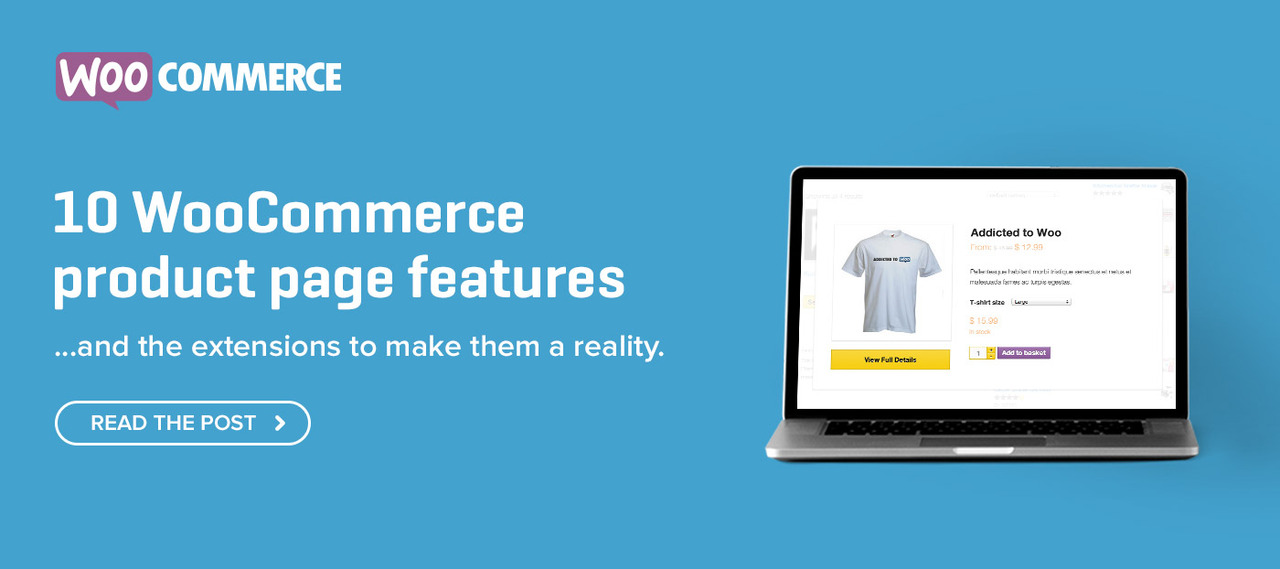
Hi Troy,
My name Pavan. I am from India. I am new to the wordpress so I need some of your help.
I am waiting for your reply.
Thanks,
Pavan
Hey Pavan,
Thank you for stopping by and leaving a comment.
Do you have any specific questions I can help you with?
Hi Troy,
Thank you for replying. I am creating a E-Commerce site. I am using Colorlib theme and woocommerce plugin. I want to active the credit card option in my checkout page. So how to active the credit card option in checkout page. Thank you in advance.
Thanks,
Pavan
My current clients are very small business, mostly solo entities, so my projects are generally up to 10 page websites and are inexpensive for the client to be appealing – AND they don’t have an existing website.
I have been wanting to land ‘larger’ clients for a while, but one of my mental hurdles about going after the bigger fish is – they already have a website, so why would they want to change their provider. You mentioned skeletons in the closet which may be an angle but so far I have really struggled with approaching larger companies.
Hey Jayne,
You are not alone in experiencing the mental hurdles. I think it is a mistake to approach larger companies with the idea of rebuilding their entire website. My approach has always been to build a relationship first to get my foot in the door. If you can help out with some basic lead capture strategies, content updates, managing plug-in updates and backups, training their staff how to use WordPress, or any other way you can start to build trust with the individuals inside the company. Over time you will discover if they are disgruntled with their existing provider and as long as you have done a good job then you may be a viable option.
One reason larger companies like smaller freelancers is because they can move fast and I don’t have the admin overhead of account managers and project managers.
Ask yourself what you are really good at and how you can start to add value to some of the larger clients that you want to work with.
Running a free two-hour training session and inviting a handful of larger companies to send their staff along might be a great place to start.
Hi,
I can second Troy’s comments. We have a small WordPress development business, last year we ran a free workshop promoted through a local digital festival, we invited people to apply for a free 1 hour, 1 to 1 session, where we would help them with any problems they may be facing. Sure enough with a couple of months we had gained 2 sizable clients. No cold calling, free promotion, the client recognized the value and came knocking on our door.
Nice work Simon – and thanks for stopping by to let us know.
Hi Troy, I found your article by accident and was hooked – I am a hobby developer myself, but have not tried to sell any of my themes. The market is really swamped right now, but after reading your opinion I will try to reach paying customers. So, thanks a lot and have a nice weekend.
My pleasure Jana – it’s actually WooThemes that deserve the thanks for prompting me to write this article.
All the best.
That’s very sweet, Troy – we appreciate you sharing your wisdom so much!
Hi Troy,
I like the article and totally agree that big businesses are worth it and typically lower maintenance. I like what you said about smaller businesses being a little apprehensive to spend money and requiring more time. They are a little higher maintenance.
Currently I build sites mainly for small businesses but it is difficult for small business owners to spend the money. They tend to be tight with money. I would like to bring on some larger clients, but often times they have in house teams of web developers. I will take the advice of the article and the comments on the article to try to get some bigger clients.
Hi Troy
Great article that I found myself nodding and uh-huh-ing at.
The biggest obstacle I have is dealing with all of the day to day requirements of all the small businesses I look after now. I really need to add people to my business to look after all of the current stuff, so that I can go after the bigger fish (something I love to do). But the problem is always a) finding the right person, b) investing the time and trust in the new person and c) cash flow – adding another salary!
Would love to hear your thoughts on how a small agency can grow and add staff in order to move to the next level!
Cheers